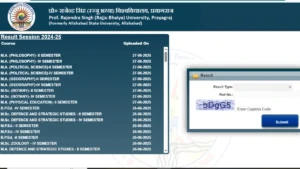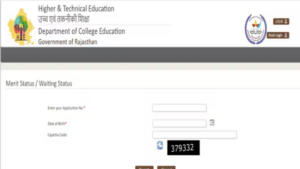The best way to cover backlogs: In the period of graduation, many students are not able to maintain their success rate in every semester in every subject. Due to it, many students has to face backlogs in their graduation. At some point; these backlogs could be destructive to the graduation and needs to clear ASAP. This is the core reason why many graduating students ask “What is the best way to cover backlogs?”
The Best ways to Cover Backlogs
If you are also willing to ask the same question, then stay with us till the end of this article, because we are going to provide you with all the information about the related question.
What are backlogs & Why are they a concern for Students?
Backlogs refer to the academic courses or subjects that a student has failed to clear in a particular academic year or semester. Backlogs can be a concern for students as they may affect their academic progress, delay their graduation, and cause stress and anxiety.
Backlogs can also affect a student’s confidence, self-esteem, and motivation to continue their education. Clearing backlogs often requires additional effort, time, and resources, which may further add to a student’s stress and anxiety. Therefore, it is essential for students to address and overcome their backlogs to ensure their academic and professional success.
How do backlogs affect Academic Performance of a student
Backlogs can have a negative impact on the academic performance of students as they can cause students to fall behind on their coursework, miss assignments or exams, and ultimately result in lower grades. The stress and pressure of dealing with backlogs can also impact a student’s mental health and well-being.
What are the best ways to cover backlogs?
We have listed a few effective ways to cover backlogs below:-
- Prioritize and plan: Create a priority list of backlogs and plan a schedule to cover them based on their difficulty level and deadline.
- Seek guidance from teachers: Seek guidance and support from your teachers to understand the concepts and clear your doubts.
- Use technology: Use online resources such as video lectures, podcasts, and e-books to supplement your learning and clarify concepts.
- Collaborate with peers: Collaborate with your classmates to form study groups and discuss challenging topics.
- Take practice tests: Take practice tests to assess your knowledge and identify areas that need improvement.
- Focus on conceptual clarity: Focus on conceptual clarity rather than rote learning to ensure a strong foundation in the subject.
- Manage your time effectively: Manage your time efficiently by setting realistic goals, taking regular breaks, and avoiding distractions.
- Stay motivated: Stay motivated by setting achievable targets and rewarding yourself for achieving them.
- Get organized: Keep track of your progress by maintaining a record of completed topics and assignments.
- Stay consistent: Consistency is key to covering backlogs. Allocate a fixed amount of time every day to work on them and stick to them.
Is it possible to cover multiple backlogs at the same time?
Yes, it’s possible to cover multiple backlogs at the same time, but it’s important to prioritize tasks and avoid overwhelming oneself. Breaking down tasks into smaller, manageable chunks and focusing on one task at a time can help prevent burnout and improve efficiency. Strategies for handling multiple backlogs simultaneously include prioritizing tasks based on importance and deadline, breaking down tasks into smaller, manageable chunks, using effective study techniques, seeking help when needed, and staying organized and focused.
What are some common reasons for backlogs?
We have listed a few most common reasons for backlogs below, A candidate must identify their reasons for backlogs and should work on them.
- Poor time management: Failure to manage time effectively can lead to incomplete assignments, missed deadlines, and a backlog of coursework.
- Lack of understanding of concepts: Students who do not understand the basic concepts of a subject may find it challenging to keep up with the coursework, resulting in a backlog.
- Health issues: Health issues, both physical and mental, can cause students to miss classes or assignments, leading to a backlog of coursework.
- Lack of motivation: Lack of motivation or interest in a subject can lead to procrastination, missed deadlines, and a backlog of coursework.
- Overcommitment: Taking on too many extracurricular activities or part-time jobs can leave little time for coursework, leading to a backlog.
- Personal problems: Personal problems such as family issues, financial stress, or relationship problems can cause students to miss classes or fall behind in coursework.
- Inadequate study materials: Inadequate or outdated study materials can hinder a student’s understanding of a subject, leading to a backlog.
- Difficulty with language: Students who are not fluent in the language of instruction may struggle to understand the coursework, leading to a backlog.
- Learning disabilities: Students with learning disabilities may require additional support and resources to keep up with coursework, leading to a backlog without proper assistance.
- Lack of preparation: Insufficient preparation for exams or assignments can lead to poor performance, missed deadlines, and a backlog of coursework.









 JoSAA Counselling Round 5 Seat Allotment...
JoSAA Counselling Round 5 Seat Allotment...
 Rajju Bhaiya University Result 2025 OUT ...
Rajju Bhaiya University Result 2025 OUT ...
 DCE Rajasthan UG Merit List 2025 OUT, Do...
DCE Rajasthan UG Merit List 2025 OUT, Do...









